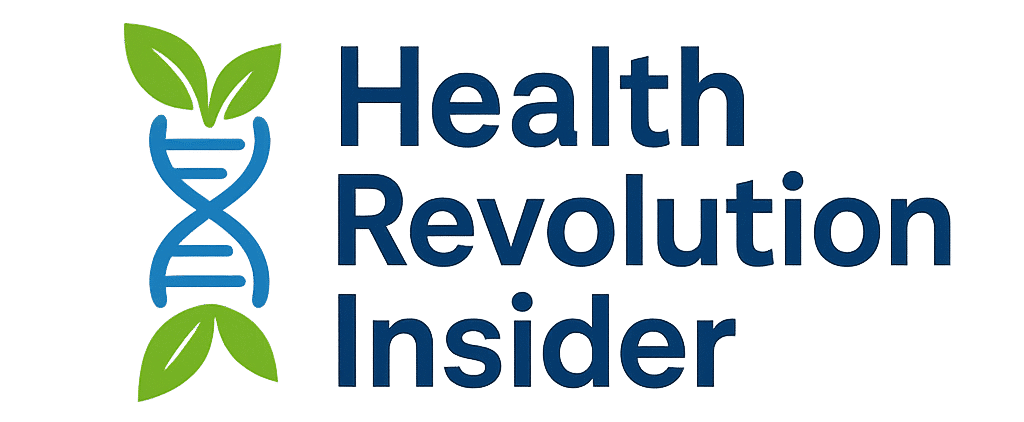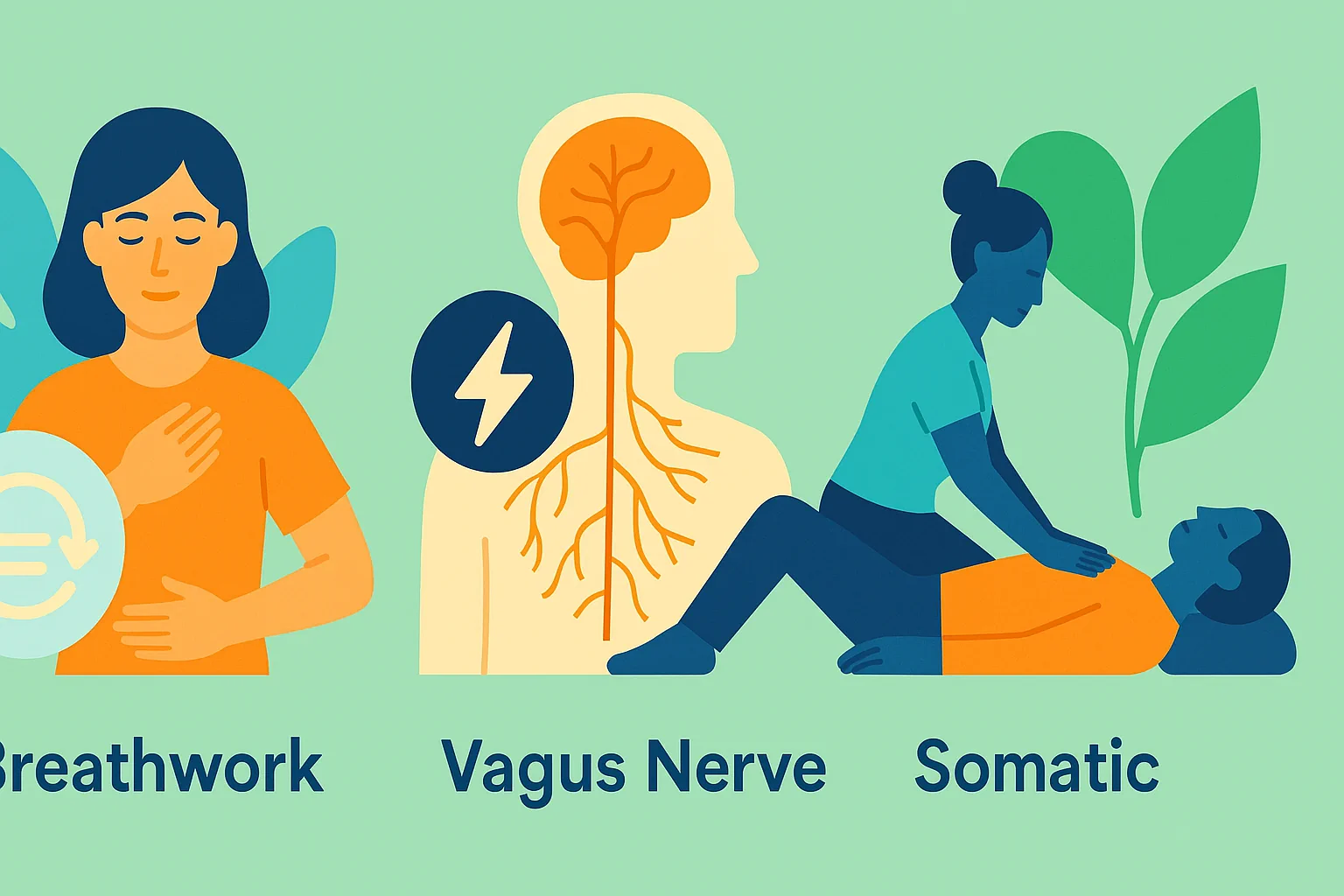Most of us think of stress as something that lives in the mind — a racing thought, a busy calendar, a restless night. But science is showing us that stress is deeply physical too, woven into the wiring of our nervous system. Every heartbeat, every breath, every knot of tension in the shoulders is a sign of how our body is navigating between survival mode and rest.
And that’s where practices like breathwork, vagus nerve stimulation, and somatic awareness come in. These aren’t vague wellness buzzwords; they are tools for speaking the language of the nervous system and gently guiding it back toward balance.
Breathing as the First Language of Calm
Unlike digestion or heartbeat, breathing is both automatic and under our control. This unique position makes it one of the most powerful levers we have for self-regulation. When you slow your exhale or deepen your breath, you’re not just “relaxing” — you’re sending signals to the brainstem that it’s safe to switch from fight-or-flight into rest-and-digest mode.
Recent studies highlight how structured breathing practices can lower cortisol, reduce anxiety, and even improve sleep quality¹. National Geographic recently went further, calling breathwork “a way to influence everything from heart health and mood to memory and sleep”2.
Somatic therapists often weave breathing into body awareness sessions. A guided somatic breathwork practice might invite you to notice the rise of your chest, the tension in your belly, or even the emotions that surface as you breathe more deeply. This is where physiology meets psychology: air in the lungs becomes a pathway for releasing stress that’s been stuck in the body3.
The Vagus Nerve: A Highway to Healing
If breath is the tool we can control, the vagus nerve is the pathway it travels. Stretching from the brainstem down through the chest and into the gut, the vagus nerve acts like a communication superhighway for calming signals. When it’s activated, heart rate slows, digestion improves, and inflammation can settle.
For decades, vagus nerve stimulation (VNS) was something reserved for medical treatments, involving surgically implanted devices. But in the last few years, research has exploded around non-invasive options. A review in Frontiers in Neurology outlines how tVNS — transcutaneous vagus nerve stimulation — can influence inflammation and stress regulation without surgery. Another 2025 review in MDPI shows how stimulating the vagus can modulate neurotransmitters and even promote neural plasticity.
Of course, science also urges caution. Devices vary widely, and not all consumer options are supported by clinical trials. Natural approaches — humming, gargling, splashing cold water on the face — may engage vagal pathways more gently, and while the evidence is mixed, these methods are safe starting points.
Somatic Practices: Listening to the Body’s Stories
While the vagus nerve speaks through physiology, somatic practices focus on sensation and awareness. The premise is simple but radical: the body holds memory, stress, and even trauma, and paying attention to these sensations is part of healing.
In a somatic session, a practitioner may guide you to notice the subtle clenching of a jaw, the shifting weight in your hips, or the flutter of anxiety in the chest. Paired with gentle breathwork, this awareness creates space for release. Unlike traditional “talk therapy,” somatic approaches remind us that not everything can be resolved by the mind alone — sometimes the body needs to be heard first.
Though research is still emerging, the logic fits with what we know from neuroscience: stress isn’t just cognitive, it’s embodied. Early findings suggest that somatic practices may help people move out of chronic sympathetic dominance — the constant state of readiness for danger — and restore parasympathetic calm.
Small Experiments, Lasting Shifts
Healing the nervous system doesn’t require hours of practice or expensive gadgets. In fact, its power often lies in small, repeated signals of safety. A few minutes of slow breathing before bed, a humming ritual in the car, or simply pausing during the day to feel your feet on the floor can begin to reshape your baseline.
Many people describe unexpected benefits. A designer I spoke to said two minutes of humming before work helped calm the rush of anxious thoughts. A teacher practicing breathing with students noticed classrooms felt less restless, more focused. Clinicians exploring VNS in medical contexts have observed improvements in conditions like migraine and depression, though more large-scale trials are still needed .
What unites these stories is a sense of returning to balance — not by force, but by teaching the body how to trust itself again.
Why It Matters
We live in a culture that glorifies productivity, self-discipline, and endless resilience. But resilience isn’t about pushing harder; it’s about recovering smarter. Breathwork, vagus stimulation, and somatic awareness offer exactly that — a way to shift gears from survival into restoration.
The science is still evolving, but the direction is clear: healing isn’t just in the mind, it’s in the body’s rhythms. And learning to tune into those rhythms might be the most important wellness practice of our time.

